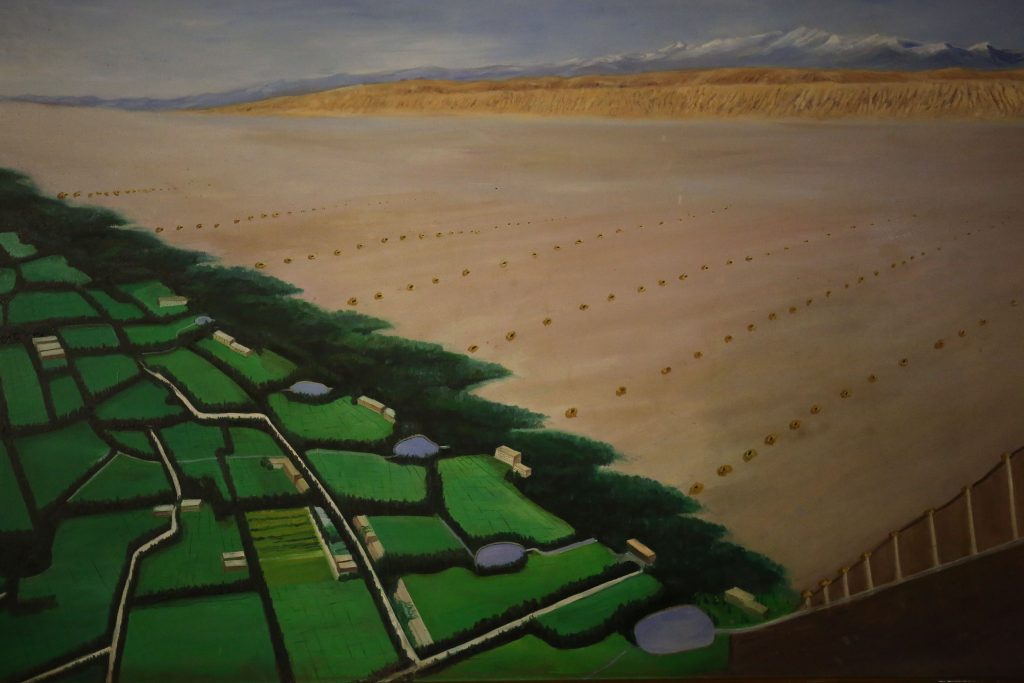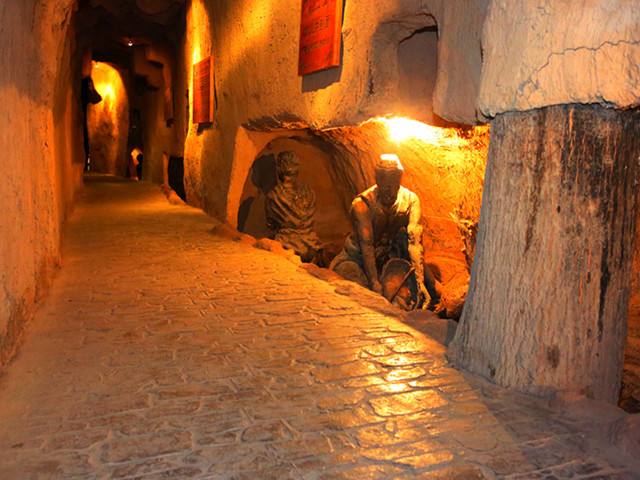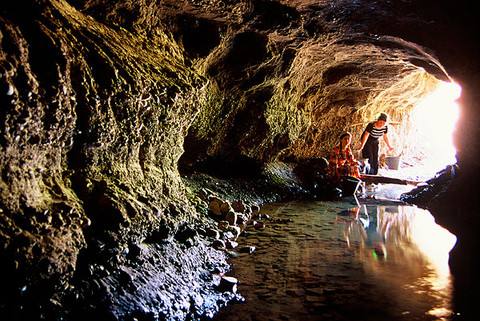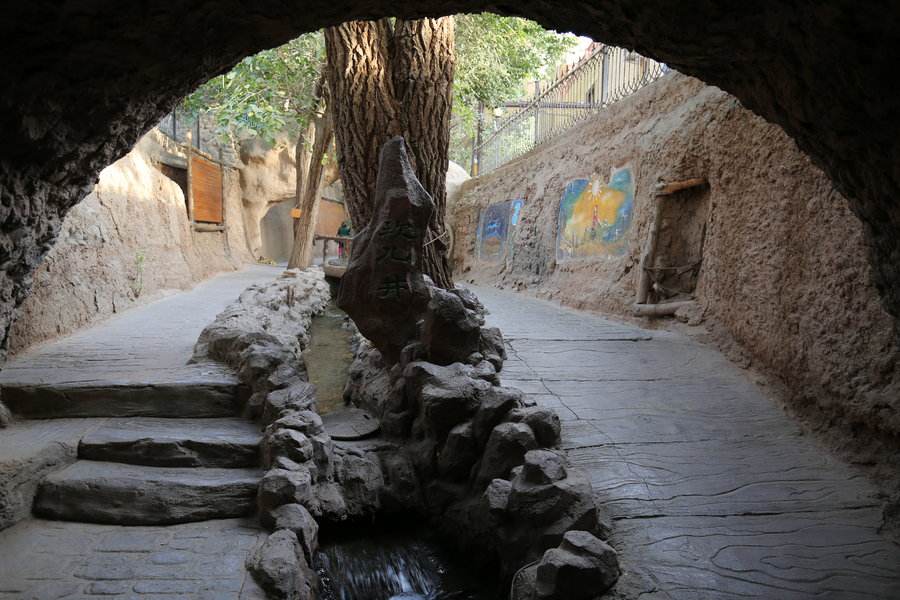Spring water flowing in a karez
3 min readAfter hearing the explanation by Qian Haoliang, Yakup Azul added, “Digging the closed conduit is most difficult because a closed conduit is 1.5 to 1.7 meters high and 0.6 to 0.7 meters wide. Usually an underground canal that is 20 to 30 kilometers long needs to be dug out to restore and transport underground water to the surface. It is very hard to determine the direction and slope of the karez due to lack of measuring equipment. “Yakup Azul continues, “So we determine the direction of the closed conduit in the up-bound direction by two vertical ropes with stones tied onto them which, we put on the windlass and then lower the two lines down to the bottom of each well. We make a mark on the ropes to determine the difference of slope. To prevent sand from jamming the underground closed conduit, the entrance of each pothole is covered with treetops or sorghum stalk. The potholes will be sealed in winter to prevent cold air from getting into the karez and freezing the water. This seal at the top will also prevent the karez from collapsing.

An acequia or open canal is the outlet between a closed conduit(Longkou) and farmland. An open canal is generally the same as the normal channel. The cross-section is mostly of trapezoid shape with a small slope and slow flow. Usually, there is an open canal under the closed conduit of a karez which is dozens of meters or hundreds of meters long.
The final procedure was the waterlogged dam. The waterlogged dam has important functions. The first function is to store water. It is located at the end of the open canal.The waterlogged dam can restore water from the closed conduit in winter when the temperature in Xinjiang is too cold for some farming. However, the karez can continue to transport water to the surface for the people. Also, the waterlogged dam can store water in the winter to be used the following spring. The second function of the waterlogged dam is to warm the water. The underground water mainly comes from melted snow which is at very cold temperatures. If water at such low temperatures were to be used for winter farming immediately through open canals, it would cause serious damage to the crops.

Water stored in the waterlogged dam will become warmer by the effects of the sun.
Therefore, it will not harm crops when irrigating. The third function of the waterlogged dam is to allocate water for farming. The building of the waterlogged dam maximizes the karez project. The water from the karez before transporting through the channel to the fields, then stored in the waterlogged dam not only increases the temperature of the water, but is also conducive to the growth of the crops, increases the flow of water and reduces water lost in channel leaking.

Karez shows the state of harmony and balance between man and nature and makes it beneficiary for the public who have mastered traditional skills to take part in the protection of cultural heritage. Faced with the challenges of our increasingly powerful modern scientific and technological civilization and the dramatic changes in the environment, the fate of karez is now at the cross roads of survival or demise. Karez nourished the people on the oasis. Today, karez is protected as tangible cultural heritage. The digging skills developed for the karez has been applied for intangible cultural heritage. This makes us believe all the more that on the Xinjiang land that we live, there are much more cultural heritages being passed down by generations which benefit today’s people. They shall not be lost in transmission.

What Yakup Azul said deserved acclamation “Sure it is hard, but without the karezes, there would have no Turpan nor the melon or the pearllike- grapes.








